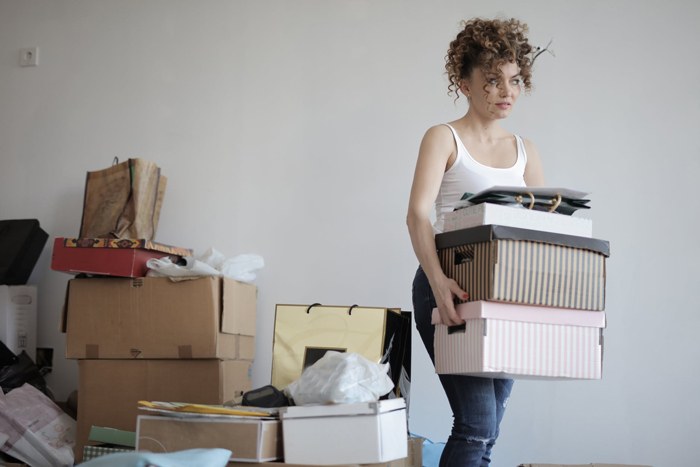Those who can be diagnosed with a hoarding disorder keep buying an unbelievable number of all kinds of stuff, and have them delivered to home where these items can be placed anywhere. Of course, this practice creates household chaos. Usually, there is no particular sense in storing all these things, they have little value, like old magazines, but they clutter up the place like there’s no tomorrow. Or some people can fill their homes with animals. The question is, what are hoarding disorder signs?
Signs of a hoarding disorder
A hoarding disorder sufferer is bound to behave in the following way:
- they collect things that are worthless or next to worthless, things that they claim they will use someday or intend to have repaired some time
- no matter what sort of item it is, they display strong reluctance to throw them away or to get rid of them – the very thought of parting with their possessions makes them grieve
- the hoarded items clutter up the place to such an extent that living there is made difficult: all the rooms are storing places, the furniture is also used for storing, walking and sitting about the place is impossible without moving away stuff that gets in the way all the time.
- they make few or no attempts to restore order and categorize their possessions
- they avoid making any serious decisions
- planning is their weak point because they are inclined to be indecisive, procrastinating, and neglectful; their perfectionistic tendencies also get in the way
- many everyday chores prove to be difficult for them, even paying their bills. They hate to clean up
- they develop a strong attachment to their belongings, not allowing other people to touch and arrange them
- their relationship with relatives and friends is weak and troubled
- they often express concern about lacking something for future use
The tendency to hoard things can begin in adolescence and grow on people as they get older. While it can get extremely problematic with mature citizens, for adults, it can also present plenty of problems and worries.
As their possessions pile up, hoarders’ attitude to them gets more and more passionate, and they seem unable to tell which item is expensive and necessary and which is valueless and useless. In their rooms, quite valuable things can be found among piddling rubbish. Hoarders don’t seem to acknowledge the fact that their storage makes their homes unhealthy and create a hazardous environment.
The risks involved
It is usual for the first hoarding symptoms to manifest themselves in early teens and develop quickly. Older citizens are more susceptible to it than younger ones.
- Risks embrace the following spheres:
- Individual traits: people suffering from hoarding disorder are highly hesitant and often unable to act with determination.
- Family traits: If a relative is also a hoarder, he or she establishes a bond with another hoarder and provides encouragement.
Traumatic experience: hoarding disorder can be an aftermath of a stressful happening that the person finds himself unable to cope with – it could be a tough divorce, a death in the family, loss of a job, or a terrible accident.
Is hoarding disorder really so troublesome?

Yes, it is. In more ways than one, actually. First, the habit grows on people and ends up so that the afflicted cannot move around their homes with ease. Then, their hygiene begins to slip. Poor relationships and deterioration of performance at work can follow.
A cluttered home is utterly unhygienic, and as such, it affects the health of the dweller as well as the visitors. The most common problems are:
- since cleaning can’t be done with proper thoroughness, dirt keeps accumulating, and rodents and insects can easily found colonies
- if a fire breaks out, it may find much that is combustible, and exits may be blocked
- there may occur trips, falls and injuries against items
- there may occur slides and even small avalanches from the tops of high piles
What’s more, senseless hoarding may indicate a graver condition, depression, anxiety, and dementia in older persons, to name a few.
When a consultation with a doctor is advisable

In case you have started hoarding things – or your partner or relative has – grab the earliest opportunity to consult a doctor or a mental health expert. Also, see if your local community or the county government offers the services of specialized agencies dealing with this issue.
Should you believe that the hoarding disorder of your partner or family member is getting out of hand badly, you would do well to consider contacting the local fire brigade, the nearest police station, the public health office, if it is relevant, the animal welfare agency to ensure the best protection against accidents.











